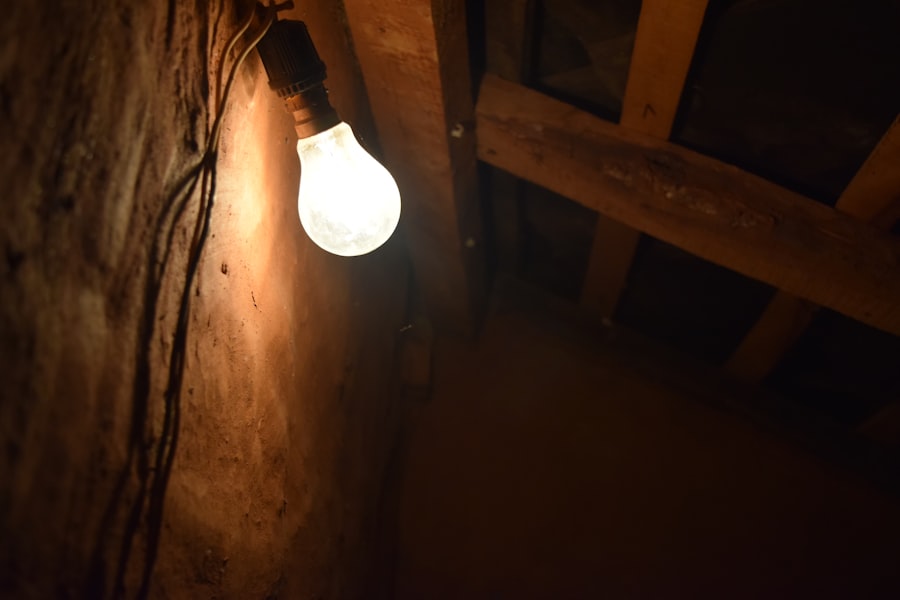Chickens require specific care to thrive in sub-zero temperatures. They need a warm, dry environment to prevent health issues and discomfort. Chickens are prone to frostbite on their combs, wattles, and feet, making protection from cold essential.
Access to fresh water and high-energy foods is crucial for maintaining body temperature and energy levels. Understanding these requirements is vital for ensuring flock well-being during winter. While chickens have natural insulation from their feathers, which help regulate body temperature, extreme cold can still be harmful.
It’s important to recognize signs of distress in chickens, including shivering, huddling for warmth, or reduced activity. By understanding their needs and observing their behavior, chicken owners can take appropriate measures to ensure their flock’s comfort and safety in sub-zero conditions.
Table of Contents
- 1 Providing proper shelter and insulation for chickens
- 2 Using heat lamps and heaters safely
- 3 Ensuring access to fresh water in freezing temperatures
- 4 Supplementing their diet with high-energy foods
- 5 Monitoring the health and behavior of chickens during cold weather
- 6 Implementing additional measures for extreme cold conditions
- 7 FAQs
- 7.1 What are the best ways to keep chickens warm in sub zero temperatures?
- 7.2 How can I insulate my chicken coop to keep it warm in sub zero temperatures?
- 7.3 Is it safe to use heat lamps or heaters in a chicken coop?
- 7.4 How much bedding should I provide for my chickens in sub zero temperatures?
- 7.5 Why is good ventilation important in a chicken coop in sub zero temperatures?
Key Takeaways
- Chickens need protection from cold temperatures, as they are susceptible to frostbite and hypothermia
- Proper shelter with insulation, such as straw or hay, is essential to keep chickens warm
- Heat lamps and heaters should be used cautiously to prevent fires and burns
- Fresh water should be provided in a heated container to prevent freezing
- High-energy foods like cracked corn and sunflower seeds can help chickens maintain their body temperature
- Regularly monitor chickens for signs of illness or distress in cold weather
- In extreme cold, additional measures like windbreaks and extra bedding may be necessary to protect chickens
Providing proper shelter and insulation for chickens
Providing Proper Shelter and Insulation
One of the most critical aspects of caring for chickens in sub zero temperatures is providing them with a well-ventilated but draft-free coop. The coop should be insulated to help retain heat and prevent drafts, but it’s essential to strike a balance between insulation and ventilation to avoid moisture buildup, which can lead to respiratory issues in chickens.
Bedding and Ventilation
Providing plenty of bedding, such as straw or wood shavings, can help keep the coop warm and dry. This, combined with a well-insulated coop, will help maintain a comfortable environment for your chickens.
Outdoor Run and Wind Protection
In addition to a well-insulated coop, it’s crucial to provide chickens with a secure outdoor run that is protected from wind and snow. This will give them the opportunity to get some fresh air and exercise while still being sheltered from the elements. Adding windbreaks or tarps to the run can provide extra protection from harsh weather conditions.
Ensuring Comfort and Health
By ensuring that your chickens have a warm and dry shelter with adequate insulation, you can help them stay comfortable and healthy in sub zero temperatures.
Using heat lamps and heaters safely

In extremely cold temperatures, supplemental heat may be necessary to keep chickens warm and prevent frostbite. Heat lamps or heaters can be used to provide additional warmth in the coop, but it’s important to use them safely to avoid the risk of fire or injury to the chickens. When using heat lamps or heaters, it’s crucial to follow the manufacturer’s instructions and ensure that they are securely installed to prevent them from falling or coming into contact with flammable materials.
It’s also important to monitor the temperature in the coop regularly to ensure that it stays within a safe range for the chickens. Using a thermometer can help you keep track of the temperature and make adjustments as needed. Additionally, it’s a good idea to have a backup heating source on hand in case of power outages or equipment failure.
By using heat lamps and heaters safely and responsibly, you can provide your chickens with the extra warmth they need to stay healthy in sub zero temperatures.
Ensuring access to fresh water in freezing temperatures
Access to fresh water is essential for chickens year-round, but it can be particularly challenging to maintain in freezing temperatures. Chickens need water to stay hydrated and regulate their body temperature, so it’s crucial to ensure that they have access to clean, unfrozen water at all times. One way to achieve this is by using heated waterers or adding a safe heating element to their water source to prevent it from freezing.
Another option is to provide multiple water sources so that if one freezes, there are still other options available for the chickens. It’s also important to regularly check the water sources throughout the day and break up any ice that may have formed. By taking proactive measures to ensure that your chickens have access to fresh water in freezing temperatures, you can help them stay healthy and hydrated during the winter months.
Supplementing their diet with high-energy foods
In sub zero temperatures, chickens require additional energy to maintain their body temperature and stay warm. Supplementing their diet with high-energy foods can help provide them with the extra calories they need to thrive in cold weather. Foods such as cracked corn, sunflower seeds, and mealworms are high in fat and protein, which can help keep chickens warm and provide them with essential nutrients.
In addition to high-energy foods, providing ample access to feed throughout the day can help keep chickens’ energy levels up during the winter months. It’s important to monitor their food intake and adjust their diet as needed based on their activity levels and the severity of the cold weather. By supplementing their diet with high-energy foods and ensuring that they have access to plenty of feed, you can help your chickens stay healthy and strong in sub zero temperatures.
Monitoring the health and behavior of chickens during cold weather

Monitoring for Signs of Distress
Watch for signs of distress, such as shivering, lethargy, or decreased appetite, which may indicate that your chickens are struggling to stay warm. Regularly checking for signs of frostbite on their combs, wattles, and feet is crucial for preventing serious health issues.
Observing Behavior
Observing your chickens’ behavior can provide valuable insight into how they’re coping with the cold. If they’re huddling together for warmth or seeking out sheltered areas in the coop or run, it may be a sign that they’re feeling the effects of the cold weather.
Taking Proactive Measures
By monitoring their health and behavior closely, you can take proactive measures to ensure your chickens are comfortable and healthy during sub-zero temperatures.
Implementing additional measures for extreme cold conditions
In extreme cold conditions, additional measures may be necessary to ensure the well-being of your chickens. This could include using windbreaks or tarps to provide extra protection from harsh winds and snow, as well as adding extra insulation to the coop or run. Providing additional bedding can also help keep chickens warm and dry during extreme cold weather.
In some cases, it may be necessary to bring chickens indoors temporarily if the weather becomes too severe for them to safely remain outside. Creating a temporary indoor space with supplemental heat can provide them with a safe refuge from extreme cold conditions. By implementing these additional measures when needed, you can help ensure that your chickens stay healthy and comfortable even in the most challenging winter weather.
In conclusion, caring for chickens in sub zero temperatures requires careful attention to their specific needs and behaviors. By providing proper shelter and insulation, using heat lamps and heaters safely, ensuring access to fresh water, supplementing their diet with high-energy foods, monitoring their health and behavior, and implementing additional measures for extreme cold conditions when necessary, you can help your flock stay healthy and comfortable during the winter months. With proactive care and attention, you can ensure that your chickens thrive even in the coldest of temperatures.
If you’re looking for tips on how to keep chickens warm in sub zero temperatures, you might also be interested in learning how to care for goslings. This article provides valuable information on how to ensure the health and well-being of young geese, which can also be helpful in understanding the needs of young chickens in cold weather.
FAQs
What are the best ways to keep chickens warm in sub zero temperatures?
Some of the best ways to keep chickens warm in sub zero temperatures include providing a well-insulated coop, using heat lamps or heaters, providing extra bedding, and ensuring good ventilation.
How can I insulate my chicken coop to keep it warm in sub zero temperatures?
You can insulate your chicken coop by using materials such as foam board, straw bales, or reflective insulation. Make sure to insulate the walls, ceiling, and floor to keep the heat in and the cold out.
Is it safe to use heat lamps or heaters in a chicken coop?
It can be safe to use heat lamps or heaters in a chicken coop as long as they are installed properly and used according to the manufacturer’s instructions. Make sure to keep them away from flammable materials and to use a GFCI outlet for safety.
How much bedding should I provide for my chickens in sub zero temperatures?
In sub zero temperatures, it’s a good idea to provide extra bedding for your chickens to help keep them warm. You can add a thick layer of straw or wood shavings to the coop floor and nesting boxes.
Why is good ventilation important in a chicken coop in sub zero temperatures?
Good ventilation is important in a chicken coop in sub zero temperatures to prevent moisture buildup, which can lead to frostbite and respiratory issues in chickens. Proper ventilation helps to maintain a dry and healthy environment for the birds.
Meet Walter, the feathered-friend fanatic of Florida! Nestled in the sunshine state, Walter struts through life with his feathered companions, clucking his way to happiness. With a coop that’s fancier than a five-star hotel, he’s the Don Juan of the chicken world. When he’s not teaching his hens to do the cha-cha, you’ll find him in a heated debate with his prized rooster, Sir Clucks-a-Lot. Walter’s poultry passion is no yolk; he’s the sunny-side-up guy you never knew you needed in your flock of friends!







